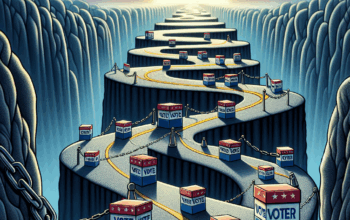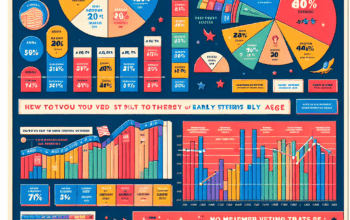Election Day Countdown: Key States to Watch
As the U.S. gears up for another pivotal election day, it’s essential to focus on the key states that will determine the outcome. In 2025, the political landscape has evolved, highlighting the significance of swing states and regional dynamics. This article delves into the election day countdown, analyzing the key states to watch, their historical context, and projected voting trends, offering insights that are critical for both voters and political enthusiasts.
Understanding the Electoral Landscape in 2025
The electoral landscape in 2025 has been shaped by various factors, including demographic shifts, economic conditions, and the aftermath of previous elections. With the increasing polarization in American politics, understanding the key states that could tip the balance is more vital than ever. States such as Arizona, Georgia, and Pennsylvania have emerged as battlegrounds where both major parties are making significant investments in time, resources, and campaign strategies.
Arizona has witnessed substantial changes in its electorate. The influx of new residents, particularly from more liberal regions, has altered voting patterns, making it a focal point for Democratic and Republican campaigns alike. With issues like immigration reform and healthcare at the forefront, how Arizona voters react to these topics will be crucial. Similarly, Georgia’s demographics continue to evolve, influenced by a growing urban electorate that prioritizes progressive policies, further intensifying its status as a key state this election cycle.
Demographic Shifts and Their Impact
Demographic shifts have greatly influenced the political dynamics within crucial states as of 2025. In states like Texas and Florida, for instance, the rapid growth of Hispanic and African American populations has begun to reshape traditional voting blocs. The influence of younger voters, who are increasingly seeking candidates that advocate for climate change and social justice, has pioneered a new wave of activism that could redefine the outcome of upcoming elections.
Texas, long regarded as a Republican stronghold, is becoming a microcosm for the Democratic Party’s aspirations. With younger, diverse voters playing a more active role in local and statewide elections, candidates must genuinely address their priorities if they want to gain traction here. Analyses predict that if Democratic turnout in Texas continues on its upward trajectory, the state may soon join the ranks of battleground states, making it imperative for both parties to recalibrate their strategies accordingly.
State-by-State Analysis of Key Battlegrounds
When pinpointing the states to watch on election day in 2025, a comprehensive state-by-state analysis reveals distinct patterns and challenges. Pennsylvania, often seen as a bellwether, is expected to be highly competitive due to its diverse population and shifting party allegiances. The state has been the target of significant campaign resources, particularly as Democrats attempt to reclaim working-class votes lost in the previous election cycles. Issues such as jobs, the economy, and healthcare remain prominent, and candidates’ ability to connect on these topics will dictate voter turnout and preferences.
Similarly, Georgia’s political landscape continues to shift dramatically as voter registration drives and grassroots mobilization campaigns target first-time voters. With high-profile races and key local issues generating enthusiasm, the state is poised to play a significant role in influencing national trends. Strategies focusing on addressing voter access and turnout are critical; these factors will determine whether Georgia ultimately swings back to either party.
In Ohio, the political scene has traditionally favored Republicans, yet emerging trends suggest a more competitive race in 2025. Voters are increasingly drawn to candidates emphasizing economic revitalization and local issues over national party narratives. As Ohio’s workforce faces challenges related to job loss and industry changes, candidates neglecting these core issues risk alienating a significant portion of the electorate. Thus, Ohio stands as a state to closely monitor as election day approaches.
The Importance of Turnout in Key States
The importance of voter turnout cannot be overstated in the 2025 election cycle. Historically, engaged and mobilized voters can swing outcomes drastically, especially in states like Wisconsin and Michigan. Both states have experienced fluctuating voter engagement levels, influenced significantly by sentiment toward key issues such as the economy and healthcare. In the months leading up to election day, voter engagement campaigns can become an essential lifeline for both parties seeking an edge.
In Michigan, the Democratic Party is heavily investing resources to energize the urban vote, particularly among Black communities. Recent statistics suggest that targeted outreach could yield increased voter turnout, especially in cities like Detroit. Conversely, the Republican Party is focusing on rallying rural voters who perceive Democratic policies as a threat to their economic interests, underscoring the intensity of the competition in the Great Lakes region.
Turnout strategies in Wisconsin will also be crucial. Battleground democracies in urban areas are being countered by traditional rural voting bases that are mobilizing to maintain their influence. The significance of community organizers and state-wide coalitions in these turnout efforts cannot be undervalued; a robust ground game has demonstrated the power to elevate voter participation rates, affecting the ultimate electoral outcomes.
Issues Influencing Voter Decisions in Key States
When voters head to the polls in 2025, various pressing issues will sway their decisions, with economic conditions, healthcare, and social justice being paramount. As inflation and economic uncertainty continue to impact the average American, candidates must address potential solutions rather than just highlight problems. A focus on local job growth, wage policies, and small business support could prove decisive in states like Nevada and North Carolina, which have seen shifts in their economic landscape.
Healthcare remains a crucial topic in the minds of many voters across different states. The COVID-19 pandemic has left enduring scars, and voters are likely to gravitate toward candidates proposing tangible reforms in health policy. In swing states like Arizona, where many residents have experienced healthcare disparities, the candidates’ ability to propose impactful health policies could dominate discussions at the polls, potentially tilting the electoral balance.
Social justice issues are also a significant consideration for many voters, especially younger demographics increasingly motivated by movements advocating for racial and social equity. In states like Minnesota and New Jersey, candidates addressing systemic racism, law enforcement reform, and voting rights are likely to inspire higher turnout among these engaged voters. As political parties devise their strategies for 2025, paying close attention to these key issues is essential for appealing to a diverse electorate eager for change.
Future Projections for Election Outcomes Across Key States
Looking forward to the anticipated outcomes of the 2025 election across key states, analysts suggest trends will continue to reflect significant political polarization. As demographic changes shape the electorate, we might expect closer contests in traditionally red states, such as Texas, which the Democratic Party sees as a path to broader electoral success. The continuous engagement of young voters and minorities promises a significant electoral shift if parties can capitalize on the enthusiasm and commitment of these groups.
As we anticipate election day, factors like early voting trends and absentee ballot requests might provide insights into potential outcomes. States with high early voting participation, such as North Carolina and Georgia, may indicate stronger Democratic turnout, posing implications for election night surprises. Conversely, if Republican voters turn out in large numbers, coupled with focused efforts on economic messaging, states like Ohio could fall once again into the Republican column.
In aggregate, the 2025 election can be anticipated as a turbulent yet transformative period in American politics, with high stakes and unprecedented engagement across various demographics. Outcomes in state-level races will shed light on broader national trends, potentially reshaping the political landscape for years to come as parties adapt to the evolving electorate.
Conclusion
As the countdown to election day in 2025 unfolds, understanding the key states to watch is crucial for both political enthusiasts and casual voters. With a focus on demographic shifts, voter turnout, and pressing key issues, analysts can glean insights into the dynamic nature of the electoral landscape. Battleground states such as Arizona, Georgia, Michigan, and Pennsylvania, among others, will serve as vital indicators of America’s political future. An engaged, informed electorate, coupled with strategic campaigning by candidates, will ultimately define the electoral tides in this consequential election.
FAQs
Which states are considered key battlegrounds in the 2025 election?
Key battlegrounds in the 2025 election include Arizona, Georgia, Pennsylvania, Michigan, and Wisconsin. These states have demonstrated fluctuating voting patterns and demographic changes that could influence the outcomes.
How does voter turnout affect election outcomes?
Voter turnout is critical as it directly impacts electoral results; higher participation from certain demographic groups can sway outcomes and determine control of congressional seats and state legislatures.
What issues are most likely to influence voters in the upcoming election?
Major issues expected to influence voters include the economy, healthcare, social justice, and local job growth. Candidates who address these issues effectively may garner broader support as election day approaches.












